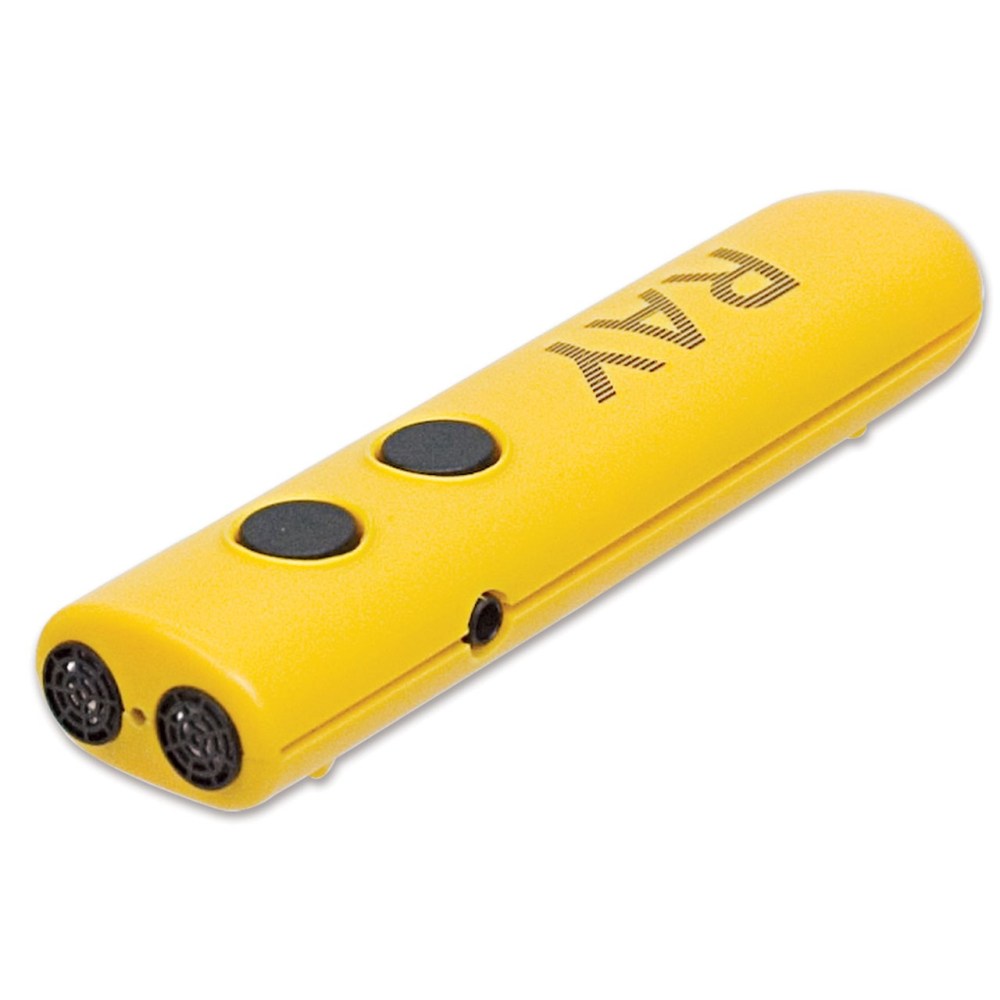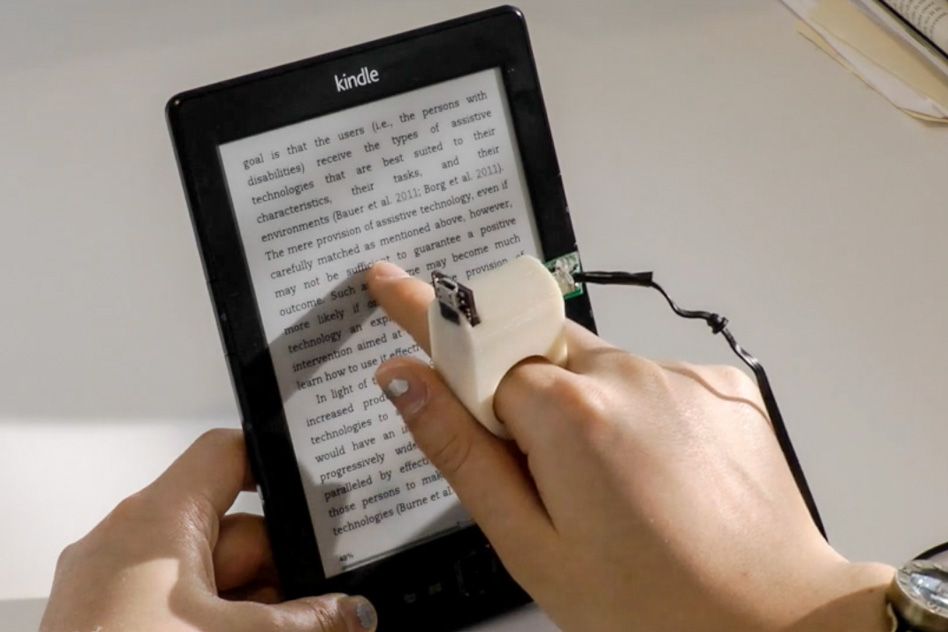Enhance Accessibility with Braille Displays and Notetakers
Enhance Accessibility with Braille Displays and Notetakers
Blog Article
Discover Innovative Tools Created for the Visually Damaged
The development of cutting-edge devices for the visually damaged stands for a substantial development in access and freedom. Technologies such as wise glasses with AI capabilities and mobile applications designed to give acoustic summaries are improving day-to-day experiences for individuals.
Smart Glasses for Navigation

Smart glasses developed for navigation are transforming the method visually impaired individuals communicate with their environment. These advanced gadgets use a combination of camera technology, expert system, and acoustic responses to give real-time details regarding environments. By utilizing barrier detection systems, clever glasses can signal customers to prospective risks, making it possible for much safer mobility in both acquainted and unfamiliar setups.
The combination of GPS modern technology even more enhances navigation capacities, permitting customers to obtain auditory directions as they move. This hands-free strategy not only cultivates self-reliance yet also equips visually impaired individuals to browse urban landscapes with boosted self-confidence. Furthermore, several smart glasses are furnished with functions that recognize landmarks and street indicators, providing contextual details that enhances the individual experience.
Moreover, the growth of these gadgets is consistently advancing, with firms working to enhance the accuracy of things recognition and increase the variety of navigational features. As clever glasses become more affordable and easily accessible, they hold the prospective to dramatically transform life for aesthetically impaired individuals. Ultimately, these cutting-edge tools stand for a critical step towards inclusivity, offering enhanced flexibility and a better sense of autonomy for individuals browsing the world around them.

Mobile Application for Daily Living
Exactly how can mobile applications improve the day-to-days live of visually impaired people? Mobile applications are transforming the means aesthetically impaired individuals browse their settings, manage everyday jobs, and accessibility information. These applications offer essential support with numerous functionalities, fostering self-reliance and boosting lifestyle.
Several ingenious mobile apps are created especially for daily living. Applications like Be My Eyes connect visually impaired users with sighted volunteers via video calls, allowing them to receive real-time assistance with jobs such as reviewing tags or browsing unknown areas. Seeing AI, created by Microsoft, utilizes synthetic intelligence to define environments, checked out text, and recognize things, successfully transforming a mobile phone right into a powerful device for day-to-day help.
Additionally, navigating applications tailored for the aesthetically impaired, such as Aira and BlindSquare, offer audio-based instructions and environmental information, making it possible for individuals to traverse their surroundings securely and confidently. Past navigation and immediate help, mobile apps also sustain organization and job administration, with features that assist users set suggestions, create order of business, and track consultations. In summary, mobile applications offer as indispensable sources, equipping aesthetically damaged individuals to lead even more independent and fulfilling lives.
Wearable Technologies for Aid
Empowerment with technology is significantly obvious in the realm of wearable tools created to help visually damaged individuals. These innovative devices integrate flawlessly into life, enhancing navigation and giving important responses to individuals. Clever glasses equipped with cameras can review and identify faces message out loud, allowing customers to communicate even more with confidence in social and specialist setups.
One more remarkable improvement is using haptic feedback systems in wearable devices. These systems make use of vibrations or other tactile signals to communicate info concerning the customer's setting, such as barriers or adjustments in surface, boosting mobility and safety. Wearable innovations likewise include wristbands that link to smart devices, informing customers to notices with subtle vibrations, thus enhancing connectivity without dependence on aesthetic signs.
As these modern technologies proceed to advance, they are not just enhancing self-reliance for visually impaired individuals but additionally cultivating a higher feeling of addition in society. By bridging the gap in between obstacles dealt with in everyday living and the capacity for freedom, wearable innovations function as essential devices in the pursuit for equal rights and empowerment for those with visual impairments.
Audio Description Devices
Audio description tools play a critical duty in improving ease of access for aesthetically impaired individuals, providing them with the ability to involve with aesthetic media. Assistive technology for the blind. These devices use narrated descriptions of vital visual components in films, tv shows, and live efficiencies, guaranteeing that customers can completely understand the context and feelings conveyed with visuals
Audio description can be incorporated into numerous platforms, consisting of streaming solutions, cinema testings, and live theater. Lots of preferred streaming services currently consist of audio description as an accessibility function, permitting audiences to pick it easily. In enhancement to mainstream media, specialized applications additionally exist, offering audio summaries for art exhibits, galleries, and various other cultural occasions.
The performance of audio summary hinges on the skill of the narrators, that should share aesthetic information succinctly without detracting from the initial audio. Developments in this area are additionally leading the means for more individualized experiences, where customers can adjust the level of detail and pacing according to their choices.
Braille Innovations and Instruments
Braille innovations and tools have actually considerably changed the method aesthetically impaired people communicate with message and details. Modern developments have actually caused the development of functional tools that improve literacy and self-reliance amongst individuals. Especially, Braille display modern technologies have progressed, allowing for vibrant analysis experiences. click to read more These devices transform electronic text right into Braille, making it possible for individuals to access a large selection of details on computers, tablet computers, and mobile phones.
In addition, mobile Braille notetakers incorporate traditional Braille input with contemporary performances, promoting note-taking, organizing, and record editing and enhancing on the move. Mobility aids for visually impaired users. These portable tools usually include text-to-speech capacities, linking the space between Braille and auditory information
On top of that, innovative Braille printers have arised, permitting individuals to create Braille tags, papers, and academic materials efficiently. This ease of access fosters greater participation in expert and academic atmospheres, eventually advertising inclusivity.
In addition, study right into smart Braille modern technologies proceeds to increase. Devices that include expert system are being explored to view website provide real-time navigating help and contextual info, enhancing the customer experience in varied settings. In general, these developments reflect a dedication to equipping aesthetically impaired people via innovation, ensuring they can easily accessibility and involve with the world around them.

Verdict
The innovation of ingenious tools for the aesthetically impaired dramatically improves independence and high quality of life. These technologies not just foster greater incorporation but additionally promote freedom in daily activities, inevitably contributing to an extra equitable and easily accessible society for visually damaged individuals.
As wise glasses come to be a lot more accessible and budget-friendly, they hold the potential to substantially change daily life for aesthetically damaged users. Mobile apps are changing the way visually impaired customers browse their environments, handle day-to-day jobs, and gain access to info. Applications like Be My Eyes attach visually impaired individuals with sighted volunteers by means of video clip phone calls, enabling them to get real-time assistance with tasks such as checking out tags or browsing strange spaces.Additionally, navigation applications customized for the visually impaired, such as Aira and BlindSquare, provide read what he said audio-based directions and ecological details, making it possible for users to traverse their surroundings securely and confidently.The development of cutting-edge devices for the aesthetically damaged dramatically enhances independence and quality of life.
Report this page